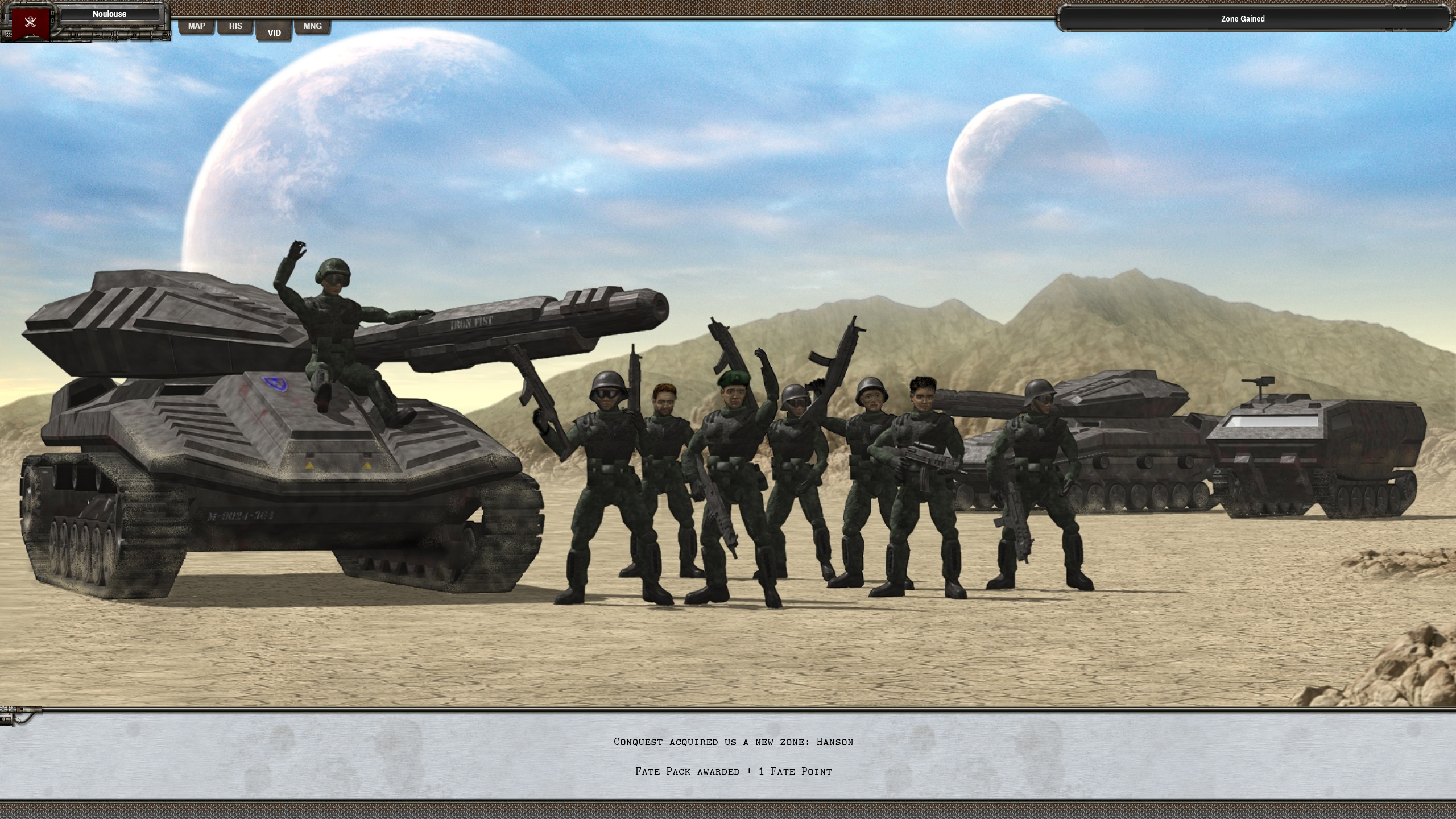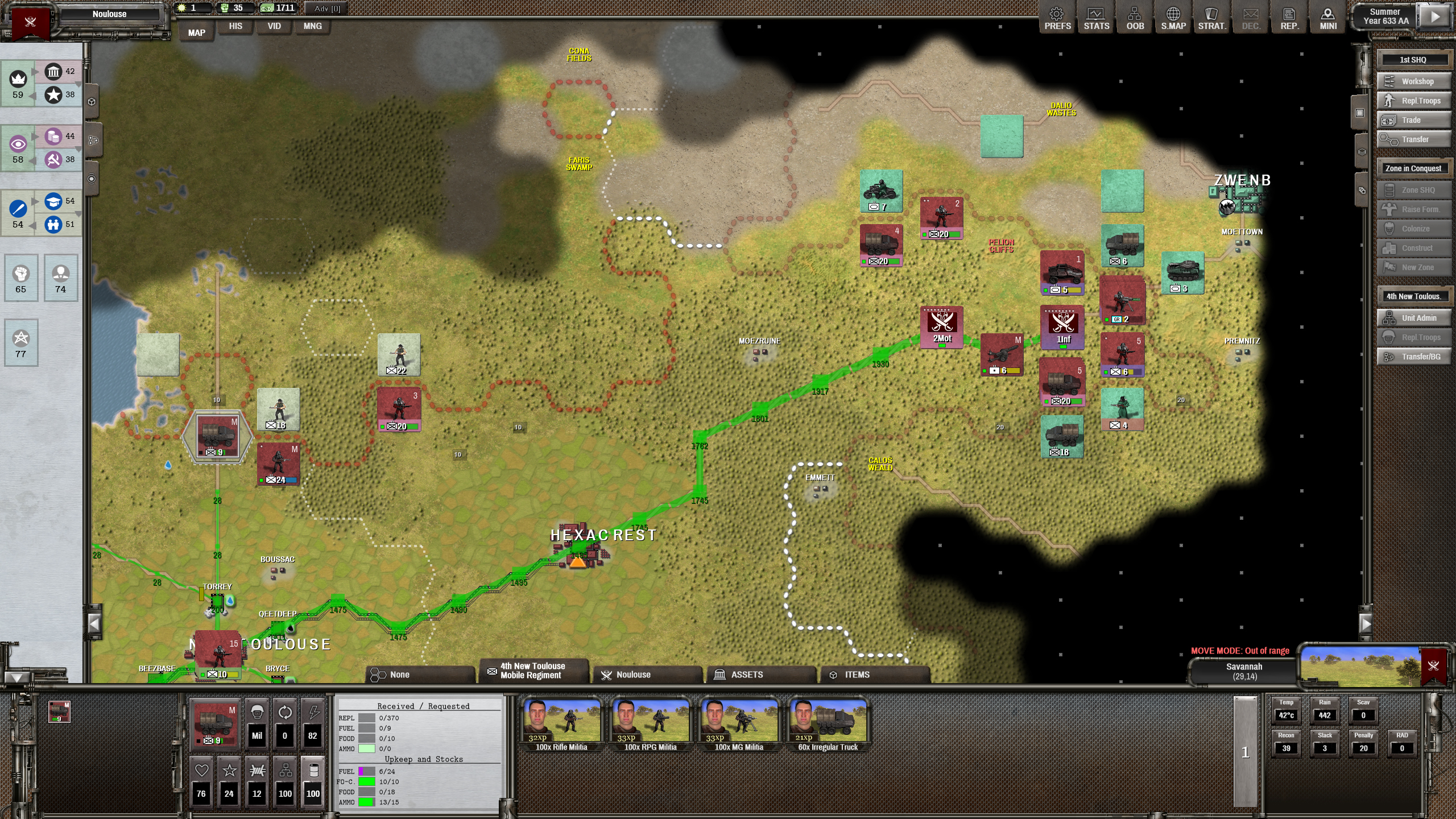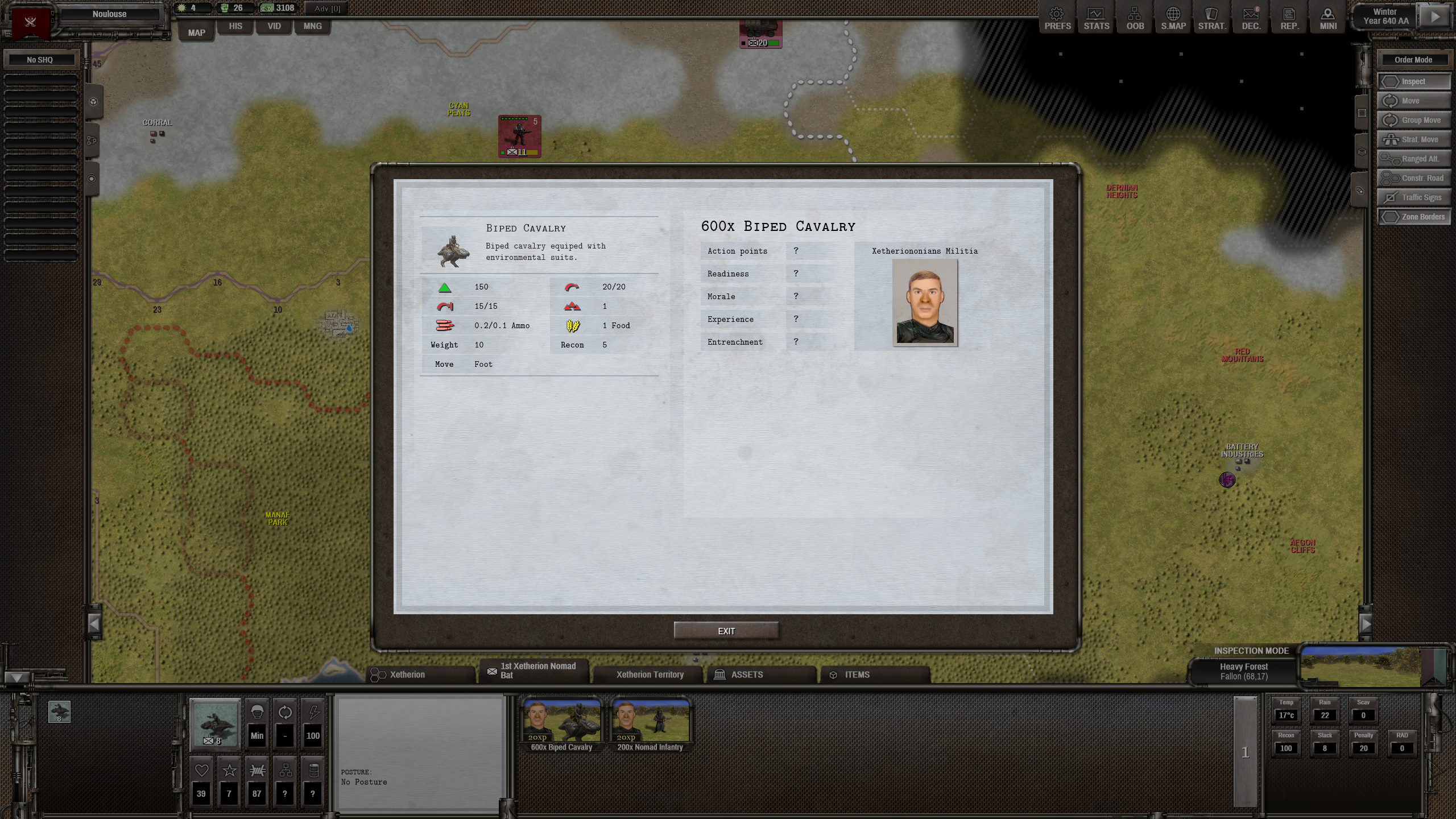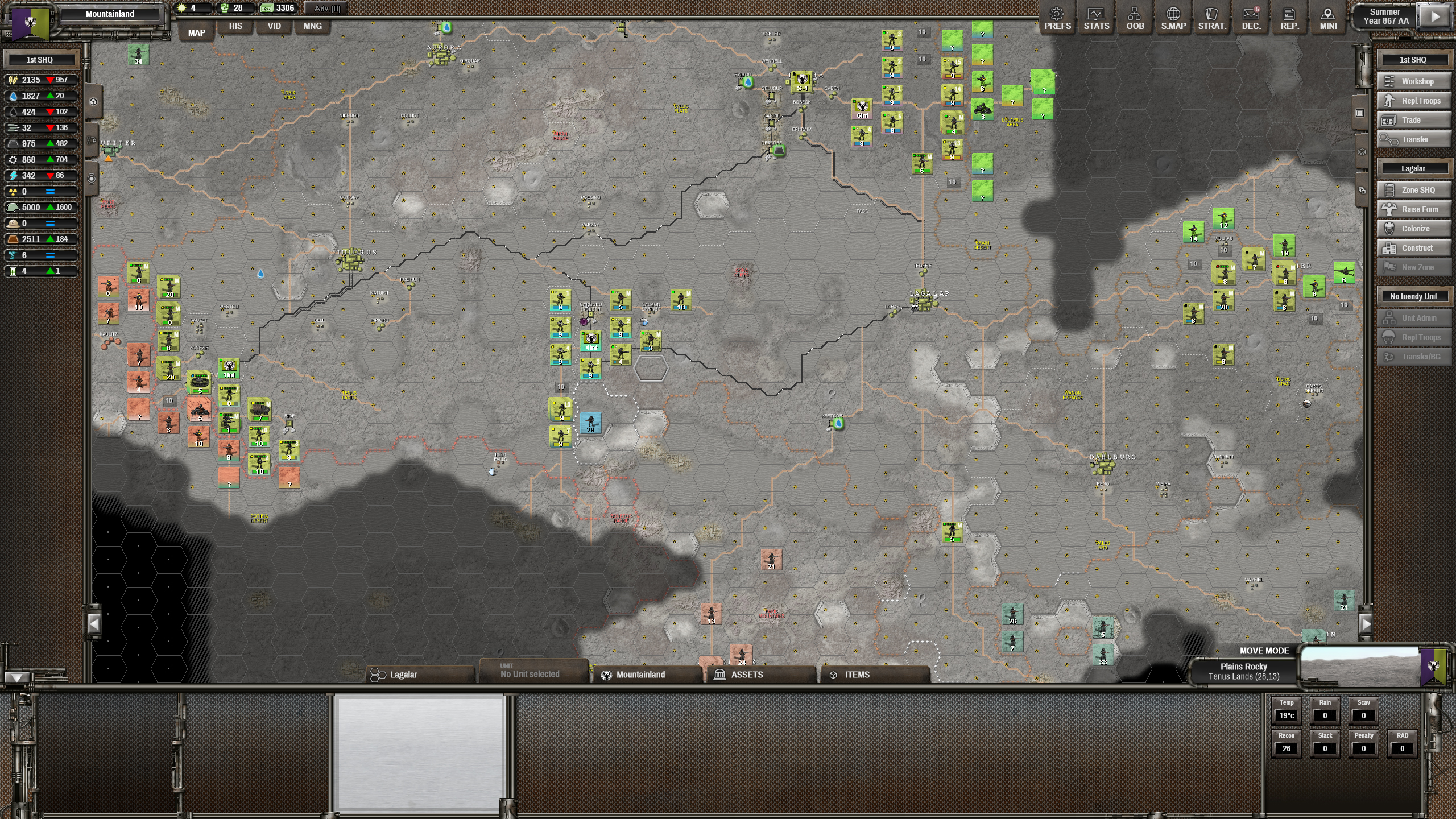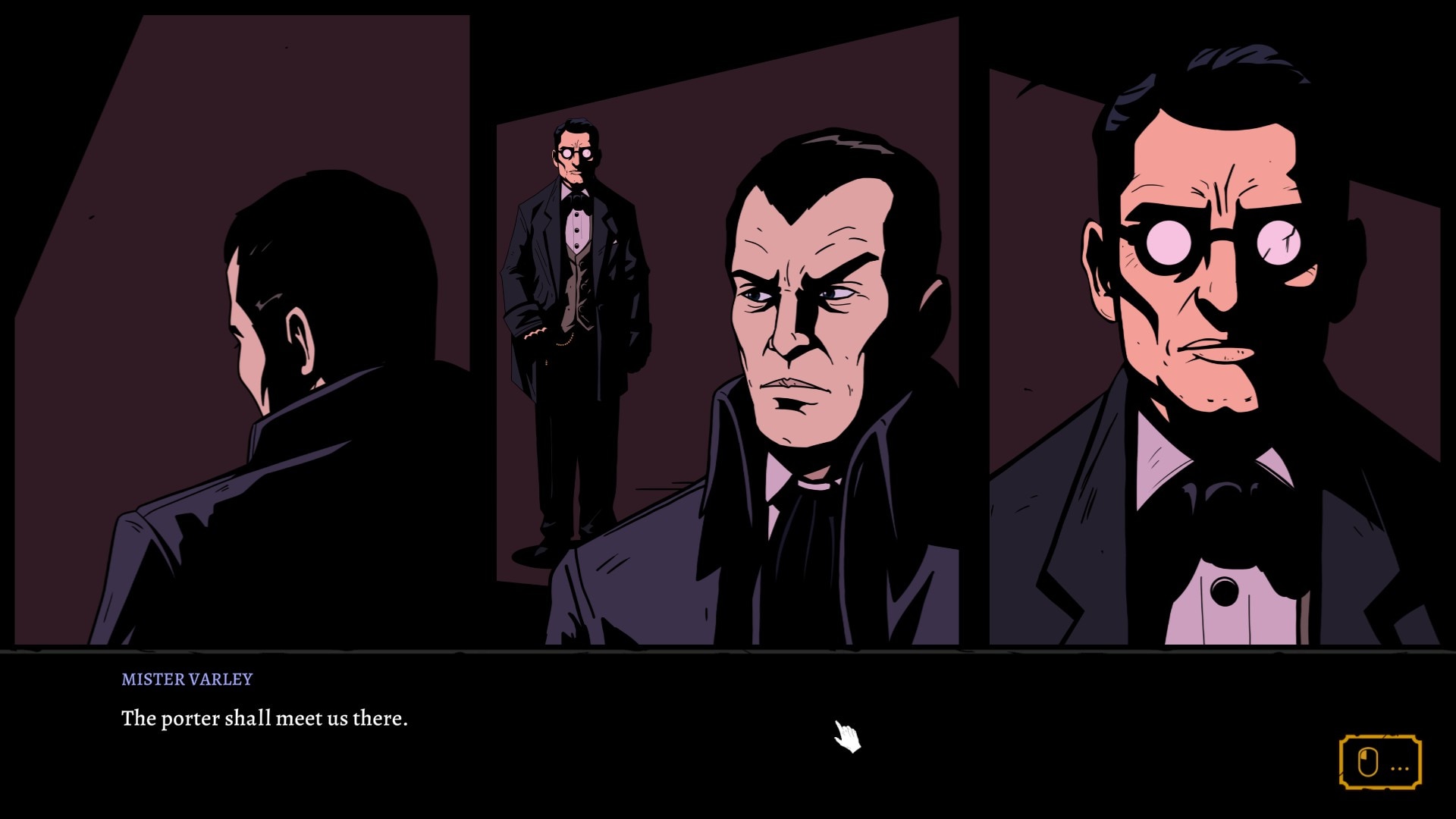Our Verdict
Ambitious in the extreme, Shadow Empire is a unique sci-fi wargame that's a little lost in its own details.
PC Gamer's got your back
What is it? A sci-fi 4x wargame with a huge scope.
Reviewed on: AMD FX-8350, Nvidia GeForce GTX 1070 Ti, 32GB RAM
Price: $40
Release Date: Out now
Publisher: Slitherine
Developer: VR Designs
Multiplayer: Yes, PBEM
Links: Matrix Games , Steam (not available yet)
I'd just about given up on Shadow Empire when the mutants attacked. My nation's borders were stagnant, and I'd started to feel nothing much more interesting would happen. Then, an expeditionary brigade on the depopulated frontier made contact with a large unknown force. Then two more. Suddenly, my nation was desperately reinforcing the line as tens of thousands of screaming, cannibal mutants charged out of the northern wastes.
These are the kinds of surprising moments that make sprawling sci-fi wargame Shadow Empire interesting. A game of extreme ambition, Shadow Empire takes place on a far-future planet long after the fall of a star-spanning republic. Reduced to post-apocalyptic settlements for hundreds of years, the people are just now starting to reach beyond their immediate surroundings.
As the absolute ruler of a nation, the player's end goal is to recover old technology, reinvent industrial-scale warfare, and become the most powerful ruler on the planet. Technology in the game starts with improvised rifles, makeshift tanks, and post-apocalyptic raiders. It ends with mass-produced mechs, powered armor, plasma guns, and tanks sporting miniaturized fusion power plants. It has a complex, detail-oriented simulation of politics, governance, and economics that complement the main focuses: technology and warfare. The planets you fight over are diverse and complex, with their own generated histories both human and geological. They range from airless moons to lush jungles full of deadly alien megafauna.
These complex systems are impressive on the surface, but one of Shadow Empire's problems is that you can generally only see the surface. The interface struggles to show how the systems interact, or even what they're doing. These mysterious systems cause the frustration, but also the fun and fascination, of playing Shadow Empire.
If you couldn't tell from the hexes and clunky UI, this is a wargamer's wargame. The 3D character models look like square-jawed 1990s action figures. Some might find it charmingly dated, or retro, but I did not. As with so many games in the genre, the user interface and controls are frustratingly inconsistent and dense. If you're not a veteran of strategy games it may well take tens of hours, and a thorough reading of the manual, before you feel comfortable.
Shadow Empire is firmly fixed on wars. The way to win is to conquer enough of the world's land mass and population to be the clear hegemon. There are a few other major nations willing to engage in peaceful alliances or long-term agreements, but the majority of major nations will have to be overcome through total war. The diplomatic tools available feel lacking for the inter-war periods and cold wars that inevitably crop up.
Going to war
At least the warfare is good. It's a joy to discover new types of units, customize them using technology you've researched, and field them in independent or complex combined-arms formations. I grew extremely fond of siege divisions, artillery and infantry combined. I'd use them to secure ground and establish front lines. Meanwhile, I'd use my often-scarce fuel reserves to mobilize smaller brigades of mechanized infantry with attached tank units. While the infantry held the line, the armored column would smash through to take the enemy's supply depots.
Keep up to date with the most important stories and the best deals, as picked by the PC Gamer team.
There's always a way to win with what you have—it's just up to you to figure it out.
What's most fun is that you have to improvise, because research and resources are partially randomized. In one game I quickly figured out how to build my own heavy tanks, while in another I focused on large formations of truck-mounted infantry and support weapons. There's always a way to win with what you have—it's just up to you to figure it out. Of course, you or your enemies discovering a cache of untouched fusion-powered heavy tanks or powered armor will throw more chaos into the mix.
Internal politics and governance are also pleasantly complex. Your nation has political factions that work differently depending on whether you're a democracy, republic, or autocracy. It also has labor unions, corporations, and religious cults. The individual characters from these factions are given places in your developing government as you establish new bureaus and departments—jobs like internal affairs, military general staff, or economic development. They have goals, likes, and dislikes, and you carefully weigh decisions when your best people disagree. Anger your top-ranking generals enough and they might just take half the army rogue. Unlike games where civil strife exists but in reality rarely occurs, or is boringly abstracted, I consistently had internal schisms paralyze my nation and experienced a civil war in two of my three campaigns.
Out of sight
Shadow Empire does a lot with its deep details, and for that it's going to be remembered alongside other great, complex wargames. But unlike some of those classics, such as War in the West or World in Flames, many details just aren't well documented or surfaced to the player. There are layers so far obscured from the player experience that they're either frustrating or nearly invisible.
Take the civilian economy, for example. Your nation's districts have private enterprises and civilians who build up money and use it to do things like establish new businesses. You can provide business subsidies from tax money to support this, and your own vital taxes come largely from this internal revenue. Information on what that money does, or precisely how the civilian economy works, simply isn't available.
Planet generation is another good example. You set broad parameters when creating a new world, but ultimately features will come from a random number generator. If you want an arid semi-desert world with complex multicellular life you're going to have to re-randomize the world's life generation a lot.
How are civilian metrics like danger, fear, and unrest measured? How precisely do they increase? You cannot know.
Shadow Empire allows extensive customization when designing new tanks or infantry formations, so why is the player denied access to these other systems? They exist in a black box. I have no idea if the civilian economy or the alien life generator are interesting and complex or simply smoke and mirrors designed to give the illusion of complexity.
Shadow Empire simply doesn't let you tell it what you want to know or what you want done. A detailed plate tectonics system sounds exciting, but doesn't mean much if you never see it and can't interact with it. Time spent micromanaging your supply routes feels wasted because you're often just tweaking a path to the only available destination. How are civilian metrics like danger, fear, and unrest measured? How precisely do they increase? You cannot know.
While enjoying the end results of Shadow Empire's simulation I was consistently reminded of an anecdote about the famously-detailed game Dwarf Fortress. It's one that perfectly illustrates the bemused frustration with which I regard Shadow Empire's fine details. There exists, within Dwarf Fortress, elaborate algorithms and systems for determining weather. They form and move and cast shadows on the world in all their diverse types: cumulus, stratus, cirrus, nimbus. They influence the weather and can be monitored to see coming patterns. The creator spent tens of hours programming this system.
Of course, the player won't ever care or know: Their viewpoint is firmly downward. They can never look up.
Ambitious in the extreme, Shadow Empire is a unique sci-fi wargame that's a little lost in its own details.
Jon Bolding is a games writer and critic with an extensive background in strategy games. When he's not on his PC, he can be found playing every tabletop game under the sun.
